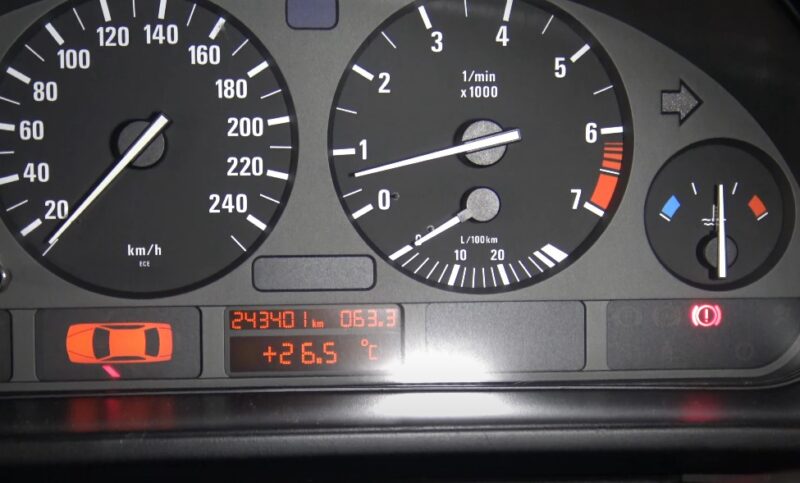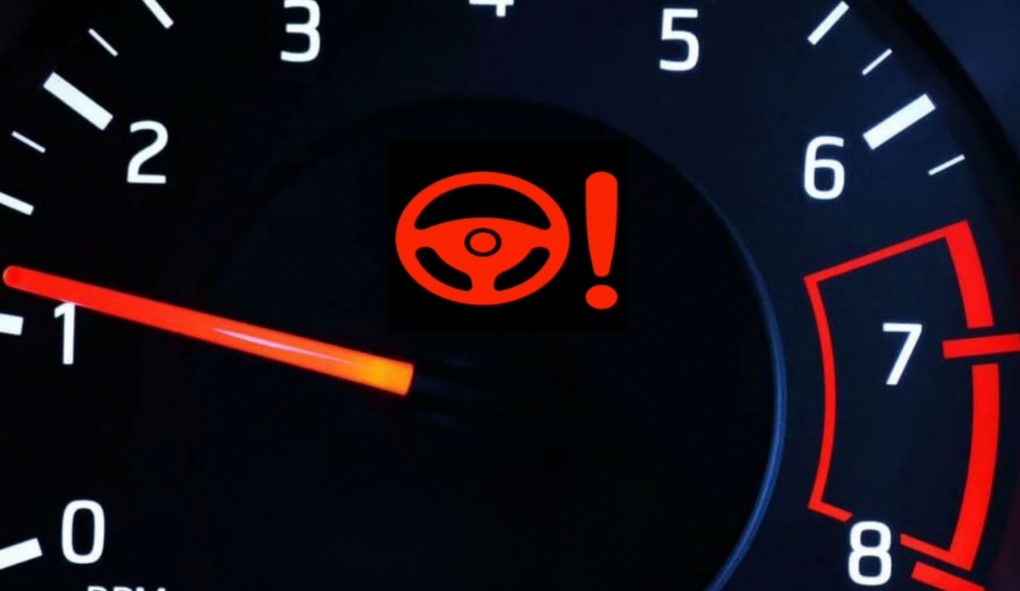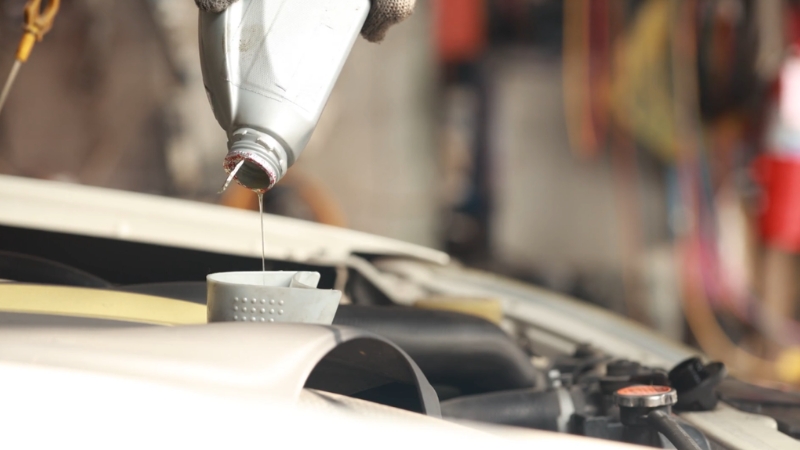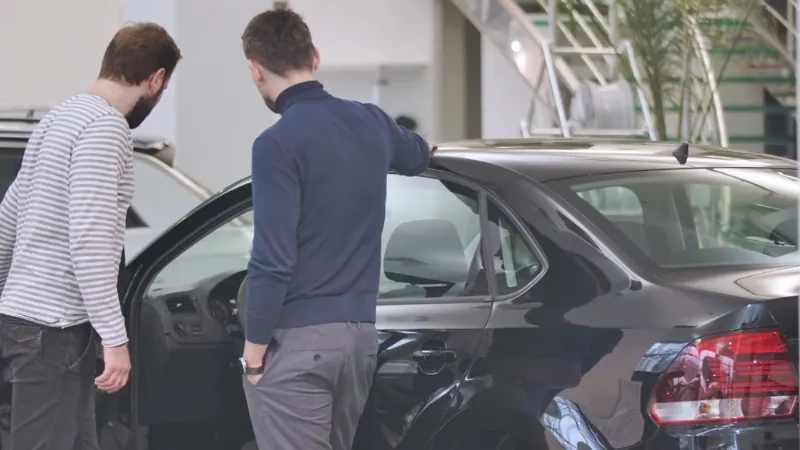
Share Post:
I still recall the early days of driving my Nissan, feeling a bit nervous whenever a new light popped up on my dashboard. Over time, I learned a lot about those symbols to the point they were guiding me on how to keep everything in good shape.
Some people may feel hesitant to tackle dashboard lights head-on, but taking a closer look can help avoid bigger headaches and keep everyone safer.
In the following sections, I’ll share what I’ve learned about common Nissan dashboard lights, what they signal, and how I tend to respond.
I want to make it feel less intimidating, so stepping into the driver’s seat feels more comfortable, even when a bright warning icon appears.
Table of Contents
ToggleA Quick Look

| Light | When It Appears | Action |
| Brake Warning | Parking brake on or low fluid | Check fluid or release brake |
| Electric Shift Control System Warning | System malfunction | Consult dealer |
| Electronic Parking Brake Warning | Brake engaged or issue | Verify release or consult dealer |
| Engine Oil Pressure Warning | Low oil pressure | Stop, check oil, seek help if needed |
| Hands Off Warning | No hands on wheel with steering assist on | Grip wheel promptly |
| Master Warning | Issues need attention | Check info display, address issue |
| Seat Belt Warning | Belt not fastened | Buckle up |
| Airbag Warning | Fault in airbag or belt system | Dealer inspection |
| Charge Warning | Charging system failure | Check alternator belt, get service if needed |
| Passenger Air Bag Status | Airbag off due to conditions | Ensure proper seating, dealer if unsure |
| ABS Warning | ABS malfunction | Regular brakes work, see dealer |
| AEB Off Warning | AEB off or unavailable | Turn on AEB or clean sensors |
| Electronic Power Steering Warning | Reduced power steering assist | See dealer if persists |
| Electronic Parking Brake System Warning | System malfunction | Dealer check |
| Low Tire Pressure Warning | Tires underinflated or TPMS issue | Inflate tires, check TPMS |
| MIL (Check Engine) | Emission or engine issue | Tighten fuel cap, see dealer if persists |
| RAB Off Warning | RAB disabled or unavailable | Turn on, clean sensors, see dealer if needed |
| Slip Indicator | VDC active or malfunction | Normal when active, dealer if always on |
| Automatic Brake Hold Indicator | Brake hold status | If malfunction, see dealer |
| Exterior Light Indicator | Lights on | Normal |
| Front Fog Light Indicator | Fog lights on | Normal |
| High Beam Assist Indicator | Auto high beams active | Normal |
| Turn Signal/Hazard Indicators | Turn or hazard in use | Normal if intentional |
| High Beam Indicator | High beams on | Dim for oncoming traffic |
Brake Warning Light

Red brake light icon is not some bad sign or something similar. In fact, it is something basic that pretty much any car offers. Let’s break it down:
- When the ignition key is turned on, a red symbol appears if the parking brake is engaged.
- Once I release the parking brake, that symbol usually disappears.
- If it stays on, it might be suggesting that brake fluid levels are running low. In that scenario, I usually pop the hood and check the fluid level or contact my trusted mechanic if I’m unsure.
Paying attention to that symbol can help ensure the car’s stopping power is reliable. Nothing is more unnerving than soft brakes, so I never ignore that alert.
Electric Shift Control System Warning Light
I remember encountering the electric shift control system warning light once. The car chimed repeatedly after I turned the ignition off, and I had no clue what was wrong.
A professional explained that a malfunction in the electric shift control system triggers that light. The best approach? Follow these steps:
- Securely apply the parking brake before leaving the car parked.
- Schedule a visit to the dealership or a qualified mechanic as soon as possible.
I’ve learned not to panic. While it might mean something is off internally, a knowledgeable technician usually gets to the bottom of it quickly.
Electronic Parking Brake Warning Light

The electronic parking brake felt fancy at first, but the warning light took some getting used to. In my experience:
- That symbol turns on when the electronic parking brake engages. Once I start the engine and release it, the light should fade away.
- If it remains lit or flashes, another internal issue might need attention. A professional checkup at the dealership can pinpoint the problem.
I value the convenience of not having a traditional handbrake lever, but I also know that fancy features come with their own quirks.
Engine Oil Pressure Warning Light
The engine oil pressure warning light is one that I learned never to ignore. On one occasion, it flickered during a long drive. After pulling over, I discovered an oil leak that needed immediate attention. What I do now:
- If that symbol comes on, I immediately find a safe place to stop and switch off the engine.
- I’ll check the oil level, and if low, add oil if I have some on hand. If the problem persists, calling a professional is a must.
Ignoring it could lead to major engine damage. Better to be safe than sorry.
Hands Off Warning Light

Modern Nissans often have advanced steering assist features. I love that my car helps keep me centered in my lane, but I must remain engaged. That warning light pops up if:
- I take my hands off the wheel for too long.
- If I stay unresponsive, the car alerts me more aggressively, even slowing down and activating hazard lights.
I appreciate the reminder. It encourages staying focused on the drive instead of relying too heavily on technology.
Master Warning Light
The master warning light can mean various issues need attention. Sometimes I find it vague, but here’s how I approach it:
- When it comes on, I check the vehicle information display. Often, there’s a message explaining the reason.
- It could be something simple like a door ajar or more urgent such as a system malfunction.
Instead of panicking, I scroll through the info panel, figure out what it’s pointing to, and address it promptly.
Seat Belt Warning Light

We’ve all heard the chime and seen that symbol flash when buckling up gets forgotten. It’s a gentle but firm reminder:
- The light and chime activate if the driver or passenger belt isn’t fastened.
- Taking a few seconds to click the seat belt can save lives.
As someone who used to shrug off seat belts in my younger years, I now appreciate that firm nudge to buckle up immediately.
Airbag Warning Light
Airbags aren’t something I think about daily, but when the airbag warning light appears, I pay close attention. Possible reasons include:
- The system illuminates for about seven seconds at startup, then goes out if all is good.
- If it stays on, flashes, or never comes on, the airbag system might not deploy properly in a crash.
When that happens, I reach out to a dealership to test the system. Better safe than discovering a problem too late.
Charge Warning Light

Driving along and suddenly a red battery-like symbol appears. I’ve had that once, and it led me to discover a loose alternator belt. Steps I follow now:
- Pull over and turn off the engine.
- Inspect the alternator belt (if you’re not comfortable doing so, avoid it).
- If the belt is broken or the light remains on, I call a professional to prevent being stranded.
Catching charging system issues early can help avoid a dead battery on a busy highway.
Front Passenger Air Bag Status Light
I’ve noticed that the passenger airbag system adjusts based on seat occupancy:
- The light may remain on if the system detects certain conditions, indicating the passenger airbag won’t deploy.
- It’s all about ensuring the right safety measures for the occupant size and position.
If something seems off, I consider a quick visit to the mechanic. Safety features only work if they’re configured correctly.
ABS Warning Light
ABS makes braking smoother and safer in slippery conditions. The ABS light comes on briefly at startup, then turns off if everything is good. If it stays lit:
- It suggests the anti-lock function isn’t working. Regular brakes still work, but that extra layer of safety is gone.
- I’d get the ABS system checked out by a specialist.
My experience taught me not to freak out but to handle it soon. Proper ABS function can prevent skidding and help maintain steering control in emergencies, like traction control.
AEB System Off Warning Light
I value advanced safety features like AEB. If the AEB Off light stays on:
- It might mean the system was turned off manually. Turning it back on through the vehicle’s info display often solves the issue.
- If it remains stubbornly lit even when on, I park safely, clean any sensors (like the front radar area), and restart the car.
- Persistent issues mean a trip to the dealership.
I feel more secure knowing my car can help prevent collisions, so I don’t brush off that warning.
Electronic Power Steering Warning Light

If the electronic power steering warning light comes on:
- The steering might become heavier, but I still have control.
- It’s often a sign something isn’t quite right in the power steering system.
I’ve never let it linger long. Heavy steering leads to driver fatigue and can be dangerous. A quick diagnostic check usually resolves it.
Low Tire Pressure Warning Light
A small icon resembling a horseshoe with an exclamation point shows up when tires run low on air. When I see that:
- I pull into a gas station or use my portable compressor to inflate tires to the recommended pressure.
- If it keeps flashing, the Tire Pressure Monitoring System might be off. That’s the time to visit a pro.
Proper tire pressure keeps fuel consumption in check and ensures better handling. I treat that warning like a gentle reminder to care for the car’s “shoes.”
Malfunction Indicator Light (MIL)

The MIL, or “Check Engine” light, gave me anxiety at first. Over time, I found ways to approach it calmly:
- A steady MIL often means an emission control issue. I’d check the gas cap first. A loose or missing cap can trigger that light.
- A blinking MIL suggests engine misfires, which can damage the catalytic converter. That’s urgent.
I usually keep a basic OBD-II scanner in my trunk. It helps me get a code and understand the possible issue before going to the mechanic.
Rear Automatic Braking (RAB) System Off Warning Light
My car’s RAB system helps when reversing, so if that light stays on:
- The system might have been turned off in the info display. Turning it back on fixes it.
- If it refuses to behave, cleaning the sensors or heading to a mechanic is the best bet.
Backup safety is crucial. I’ve grown to trust that system, so I keep it in working order.
Slip Indicator Light
Ever felt the car slip on a wet road and seen a light blink? That’s the slip indicator:
- It blinks when Vehicle Dynamic Control (VDC) kicks in to help maintain traction.
- A brief test at startup ensures it’s functioning.
If it never comes on or stays on, a pro can help. I appreciate having a friend in the background helping me keep control when roads turn slick.
Automatic Brake Hold Indicator Light

The automatic brake hold system keeps the car from rolling when I’m at a stoplight. Two colors appear:
- White light means standby.
- Green light means the system is actively holding the brakes.
It’s a small luxury I enjoy during city driving. If it’s acting up, though, a dealer visit might be needed.
Exterior and Lighting Indicators
Various lighting icons appear to show what’s active:
- Exterior light indicator: Sidelights or headlights are on.
- Front fog light indicator: Fog lights are active.
- High beam assist indicator: The car automatically adjusts high beams.
- Turn signal/hazard indicators: Confirming turn signals or hazard lights.
Those icons keep me in the know about my lighting setup. If something seems off, I’ll check bulbs and settings.
High Beam Indicator Light

When I click the stalk forward, a blue indicator appears, telling me the high beams are on. Turning them off returns it to normal headlights.
I rely on that symbol to ensure I’m not blinding oncoming traffic at night.
Tips for Handling Dashboard Warning Lights
After years behind the wheel, I’ve picked up a few strategies that help me respond smoothly to warning lights:
1. Rely on the Owner’s Manual
I keep the manual in the glove box. If something baffling appears, I flip through its pages. It explains what each symbol stands for and what I should do next.
2. Regular Maintenance
Many issues arise from neglect. Sticking to scheduled oil changes, brake checks, and tire rotations prevents many warning lights from ever appearing.
3. Using a Diagnostic Tool
A portable OBD2 scanner is a lifesaver. When a “Check Engine” light comes on, I plug it in and retrieve a code. It gives me a starting point, so I’m not walking into the mechanic’s shop clueless.
4. Take Action Quickly
Some alerts, like low oil pressure or overheating, need immediate attention. Acting fast can save me from expensive repairs and dangerous road situations.
5. Know My Limits
Cars today are more complex, and some problems require professional help. I don’t hesitate to contact a Nissan dealer if something seems beyond my basic knowledge.
Nissan-Specific Systems Worth Knowing About
Nissan offers advanced driver assistance features and eco-friendly tech, and each can light up the dashboard in unique ways:
- Nissan Intelligent Mobility – Features like lane departure warnings or forward collision alerts have their own icons. If an indicator remains lit, it might mean the system needs recalibration or service.
- ProPILOT Assist Indicators – In models with ProPILOT Assist, icons show when the system engages, disengages, or experiences trouble. I’ve learned to trust them as my co-pilot, making highway drives more comfortable.
- Hybrid or Electric Models – Driving a Nissan LEAF or another hybrid/electric model? Expect icons related to battery health, charging issues, or high-voltage components. Checking the owner’s manual or consulting a dealer can clarify what a new symbol means.
Wrapping It Up
Once I stopped fearing the dashboard and started seeing warning lights as helpful messengers, driving felt different. Those icons are valuable signals, guiding me toward timely maintenance, alerting me to potential hazards, and helping me preserve the car’s longevity.
Knowing how to react makes me feel more empowered and secure on the road. When something doesn’t look right, I don’t hesitate to ask for expert help. A trained Nissan technician can pinpoint problems that I can’t solve alone.
Over time, becoming more familiar with those warning lights gives me peace of mind. The next time a little symbol lights up, don’t panic.
Safe travels, and keep an eye on those dashboard signals. They’re there to help.
Related Posts:
- Subaru Dashboard Warning Lights - What Every Driver…
- What Does the M Mean in a Car - Everything You Need to Know
- Clicking Noise In Dashboard When Car Is Off - Here’s…
- How to Fix Chassis Control System Errors in Nissan Rogue
- What Are the Best Home Chargers for the Nissan LEAF in 2025?
- The Pros and Cons of 32 Amp vs. 40/50 Amp EV Chargers








